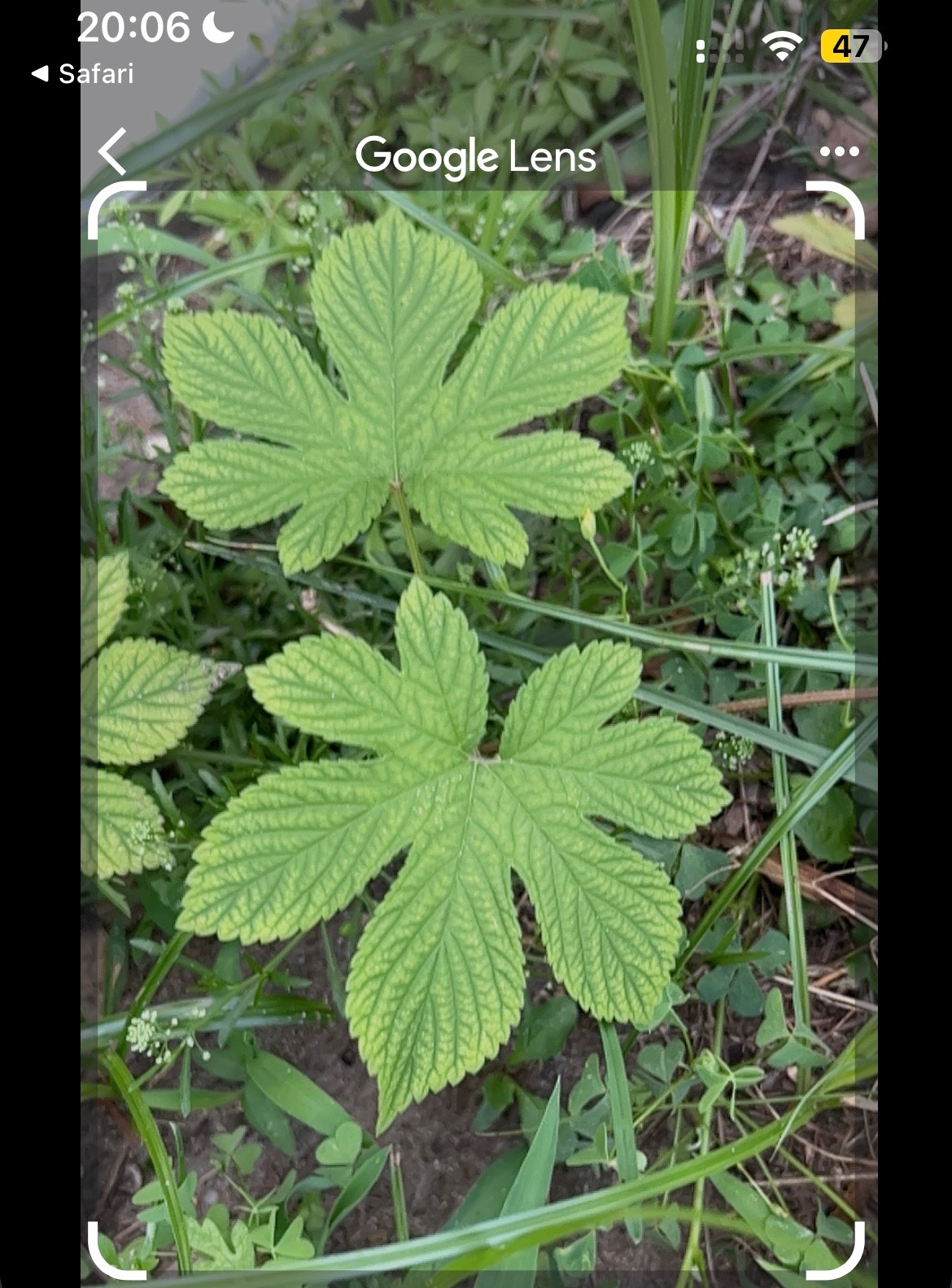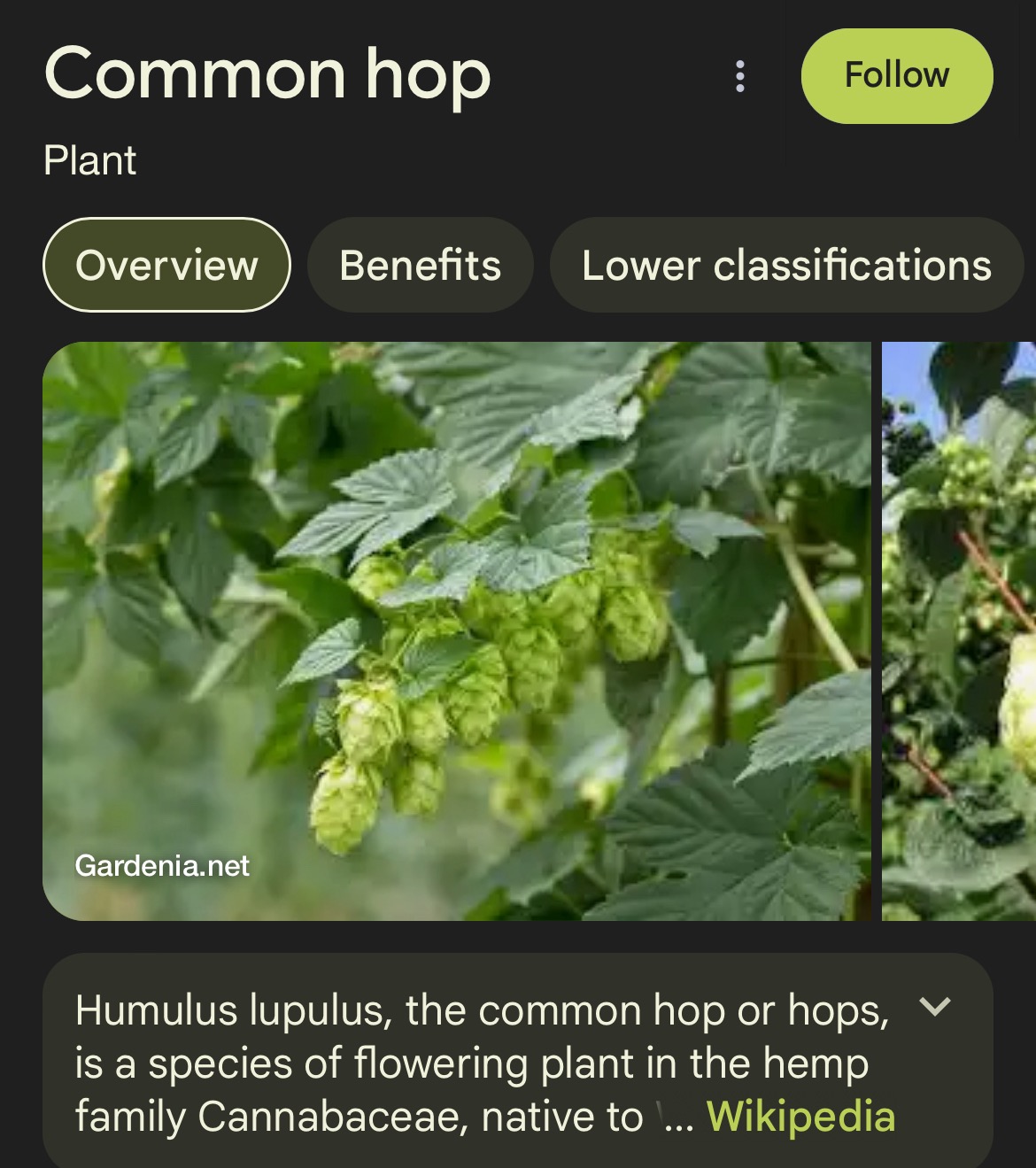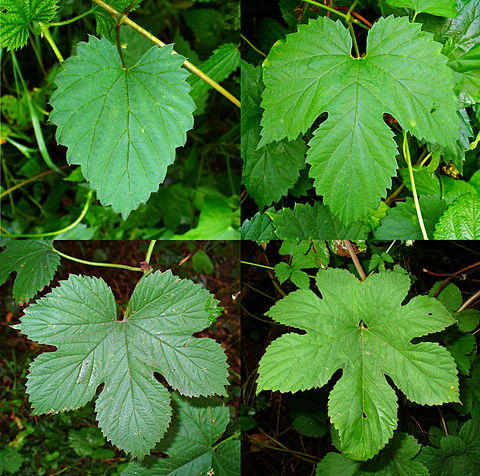land3r
Member

and Google said:

The leaves don't look the same, though. Anyone know for sure?
TIA




Ooh! Glad you mentioned it - people walk their dogs along there. I am planning on re-planting it & moving it out back to our deck/pergola where it can climb. Just for fun..... depending on how much it producesPro tip, not sure if you're gonna let it grow, or if you're aware, but if you do let it grow and have dogs that like to eat vegetation (like my brain dead labrador) make sure to contain it, raw hops can/will be lethal to dogs.
Good call. From what I've read, hops can cause hyperthermia in dogs and can be treated, but only if done quickly. If a neighborhood dog ate one on a walk, the owners may not be aware before its too late.Ooh! Glad you mentioned it - people walk their dogs along there. I am planning on re-planting it & moving it out back to our deck/pergola where it can climb. Just for fun..... depending on how much it produces










Thanks again.Good call. From what I've read, hops can cause hyperthermia in dogs and can be treated, but only if done quickly. If a neighborhood dog ate one on a walk, the owners may not be aware before its too late.
Hops are fun to grow. They grow like literal weeds (when I was growing them, they would grow inches while I was at work) so good luck and have fun!
My house had a garden bed already there when we bought the place, so I used that plus a trellis with coir for the hops to climb. A pot will work just fine. Use a soil that drains really well (like cactus or citrus soil), hops dont like standing water. They may not like grabbing on to the stake, but worth a try. What I would do is put a post at the back or behind the pot about 6'-8' tall if you have the space and put a 2x2 90 degrees off the top (like hangman) that you could run twine/jute down to the pot for the hop to climbThanks again.
How did you plant them? I'm thinking about a simple pot with a long stake to encourage upward growth for now, but really not sure...

Ok so it wasnt just me. Our house became the Japanese beetle magnet of the west coast, I swear! I actually lost an entire crop because they laid their larvae in my garden bed and the little bastards ate my rhizomes.I live in an area where hops will grow just fine. However, with the heat and humidity, they have a lot of issues with powdery mildew and a host of other things.
I do like growing them though. It’s a treat to walk by and give them a squeeze for a hoppy aroma. The other benefit is that it is a Japanese beetle magnet! It draws the beetles from my garden, and I periodically brush them off into a can of water to drown, or just pluck them off and crush their little heads before I feed them to the chickens. They come back every year and run along my fence.
I've seen them eat leaves but never rhizomes. Sounds more like a burrowing animal.Ok so it wasnt just me. Our house became the Japanese beetle magnet of the west coast, I swear! I actually lost an entire crop because they laid their larvae in my garden bed and the little bastards ate my rhizomes.
The adult females lay their eggs (a few at a time , up to 60), in the ground where they hatch in the mid summer and produce a grub which does feed on roots. In the fall, the grub goes deeper to overwinter. In the spring, it awakens and starts gnawing roots again until it pupates, then becomes an adult a couple weeks later.I've seen them eat leaves but never rhizomes. Sounds more like a burrowing animal.
I have had Japanese beetles come back year after year. My hops have survived well and are still healthy and producing. Maybe it's my climate (we have long, hard freezes here?)The adult female lay their eggs (a few at a time , up to 60), in the ground where they hatch in the mid summer and produce a grub which does feed on roots. In the fall, the grub goes deeper to overwinter. In the spring, it awakens and starts gnawing roots again until it pupates, then becomes an adult a couple weeks later.
There are treatments for grubs that will kill them in the ground, but unless all your neighbors are doing the same thing, I can’t see how it would make much difference; theirs just fly over to your yard. I will say that I tolerate the moles in my yard because I know that they love to eat grubs. In fact, one of the best treatments for moles is to apply a treatment that will kill grubs; no grubs, and the moles will go somewhere else.
So it is possible that the beetle grubs not only hit the leaves on the hops, but the grubs may attack the roots/rhizomes as well. I don’t know.
Here is a handy booklet:
Japanese Beetles
Ya, they most definitely eat the rhizomes and they are unsightly little buggers. Diatomaceous earth was the trick for me. Organic and killed them all dead. But the problem is that our hoa doesnt do sh!t about them in the common areas so they just spawn there and then cruise over to our yard for a free lunch.The adult females lay their eggs (a few at a time , up to 60), in the ground where they hatch in the mid summer and produce a grub which does feed on roots. In the fall, the grub goes deeper to overwinter. In the spring, it awakens and starts gnawing roots again until it pupates, then becomes an adult a couple weeks later.
There are treatments for grubs that will kill them in the ground, but unless all your neighbors are doing the same thing, I can’t see how it would make much difference; theirs just fly over to your yard. I will say that I tolerate the moles in my yard because I know that they love to eat grubs. In fact, one of the best treatments for moles is to apply a treatment that will kill grubs; no grubs, and the moles will go somewhere else.
So it is possible that the beetle grubs not only hit the leaves on the hops, but the grubs may attack the roots/rhizomes as well. I don’t know.
Here is a handy booklet:
Japanese Beetles
Climate does make a difference in if/how well a bug will thrive. My bug professor said that a cold winter does little to deter bugs that overwinter in the ground because they can always go a little deeper. He said what really smacks them is variable winter weather. If you get a week or so of unseasonably warm weather that fools the critters into thinking it is spring; enough to draw them out, then plunge back into freezing temperatures, they will be hammered! The bad side of that is that it effects our plants and trees the same way, and you can lose your fruit crops.I have had Japanese beetles come back year after year. My hops have survived well and are still healthy and producing. Maybe it's my climate (we have long, hard freezes here?)
My rhizomes are not below the frost line. Actually, hops require freezes to over-season, right?Climate does make a difference in if/how well a bug will thrive. My bug professor said that a cold winter does little to deter bugs that overwinter in the ground because they can always go a little deeper. He said what really smacks them is variable winter weather. If you get a week or so of unseasonably warm weather that fools the critters into thinking it is spring; enough to draw them out, then plunge back into freezing temperatures, they will be hammered! The bad side of that is that it effects our plants and trees the same way, and you can lose your fruit crops.
Oooh, there's a complicated question! It doesn't have to freeze - the traditional view is that they need a period below 8°C (46°F) at some point in winter. But it depends a bit on when the cold time comes (it's almost more important to avoid warmth until the day length is right, which is a problem with some of our recent warm winters), and it also depends on variety.My rhizomes are not below the frost line. Actually, hops require freezes to over-season, right?